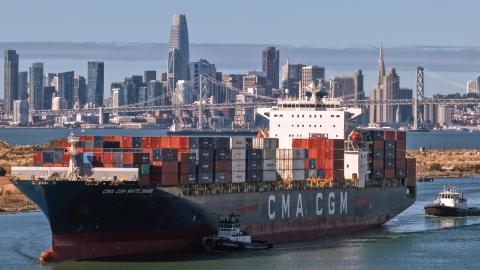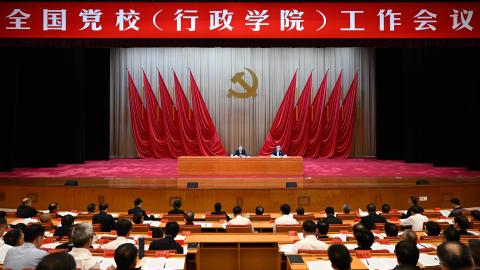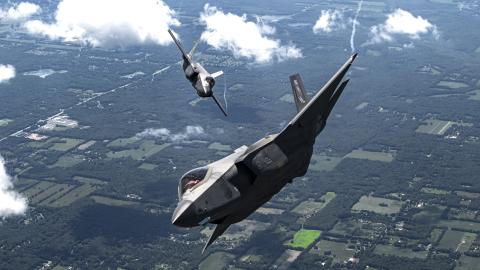In Geneva, the famous "Pink Star" diamond fetches $83 million at auction, almost double the price ever paid for such a stone, and in Arkansas, Walmart lowers its sales outlook for the holiday season. That might be a metaphor for the holiday shopping season, where grouchy retailers are predicting a relatively tiny 3 percent increase in sales over last year. "The nerds and geeks are making tons of money," forecaster Allen Sinai, chief economist at Decision Economics Inc., tells the Wall Street Journal, which adds that this is happening "even as the typical American suffers from stagnant wages and worries about layoffs."
Still, lots of those "typical Americans" are loading up on household appliances, cars and houses, which is good news for the economy, but not such good news for retailers who would rather see the money spent on clothes, gadgets, toys and the stuff with which they have crammed their shelves.
It is easy to forget, amid tales of the devastating effect of digital wearables, mobile devices, and social media on landline telephones, cable subscriptions, and print media, that retailing is also in the midst of a revolution. The Amazon story needs no re-telling-billions in sales of almost everything anyone wants or needs, free delivery-a huge success unless you believe an enterprise of that size should earn a bit of profit, which Amazon has never done. Nor does the sad tale of the decline of once-mighty JCPenney, lurching from strategy-to-strategy in an attempt to woo back the customers who fled when it abandoned special promotions. Both stories reflect only a small part of the on-going revolution in retailing.
There is of course the rivalry of the clicks and bricks, online retailers taking business from traditional store-based operations. The growth of the clicks makes for headlines and upbeat stories about the colorful entrepreneurs who have made billions from taking the companies they have established public. The recent successes of Macy's and the Gap are often buried on the financial pages of the same newspapers. What is really going on is a coming-together of the strategy of the bricks and clicks. Nordstrom's is active on the Internet and Macy's offers free delivery, a feature introduced by Amazon, while Amazon is frantically buying bricks with which to erect warehouses that can promise the same-day delivery that Walmart has begun to offer to better compete with Amazon and position itself to expand food deliveries in competition with traditional super-markets and, now, Amazon. And appliance stores have moved from being exhibition halls for shoppers who want to see the merchandise before ordering at better prices online, to competitive outlets by matching the prices of online sellers who, by the way, have to absorb delivery costs and, increasingly, charge their customers the state sales taxes they have until now avoided but now must charge in states in which they have bricks.
In short, traditional divisions are becoming somewhere between blurred and erased, with every retailer competing with every other in service offerings and goods stocked. Anyone attempting to survive in that hurly-burly has to deliver instant gratification, free of delivery charge, at prices that reflect ever-thinner profit margins. Which is why another traditional distinction is starting to blur-that between the public and private sectors. Amazon has decided to offer Sunday delivery in selected cities to attract shoppers who now mall every Sunday. To do that it has struck a deal with the U.S. Postal Service, the tax-subsidized competitor of Fed Ex and UPS, to get the specified goods to its customers from its increasingly ubiquitous warehouses as they return from church (about 40 percent of Americans) and settle onto the coach for three football games (64 percent of all Americans, 73 percent of men, 55 percent of all women). And not incidentally to pressure Fed Ex and UPS to lower their delivery charges.
Speed is the key not only in delivery, but in reading fashion trends. The important teener market, where peer-group pressure is as powerful as it is at the higher-priced celebrity end, might well distort the overall holiday season sales figures. Those who follow this market report that teens are holding back on buying apparel until schools re-open after the New Year because they fear they will show up in week-old, out-of-style fashions, to the cackles of their friends. Those purchases might not be counted as holiday sales.
The resulting data distortion will also be affected by the fact that this weekend is the last that customers can spend relaxing without fear of missing out on season-opening bargains that often sell out early. The tradition of starting promotions the day after Thanksgiving, so-called Black Friday because retailers' red ink turns to black, is as dead as the idea that Thanksgiving is a day on which to give thanks for our multiple blessings, and the Christmas season a time to reflect on matters less worldly than nailing down bargains in giant television sets. With no political ads with which to compete for television time-last year, the presidential candidates hogged the airwaves-commercials warning viewers to shop early or miss out on bargains are already making their appearance in prime time.
The late (November 29) arrival of Thanksgiving means there are unusually few shopping days between that holiday and Christmas. (Hanukkah will begin the evening before Thanksgiving day, so Jewish shoppers will be able to relax while they simultaneously celebrate the re-dedication of the Holy Temple and the survival of the Puritans newly landed in America.) Also, retailers know that many consumers will be getting a case of Obamacare-shock towards the end of the year when they find out how much their insurance premiums have risen, and want to lure shoppers to their stores and web sites before the bad news sinks in. Walmart went so far as to announce its holiday layaway program in August. Escape the summer heat by coming into an air-conditioned store to make a deposit of the greater of $10 or 10 percent, and Walmart will hold an iPad, Barbie Dream House, "ride-on vehicle" or other item for you until Christmas at no charge. Missed out on that? No problem. Wolf down your Thanksgiving dinner and get to Walmart, Target, Best Buy, or other retailers by 6 p.m. on Thanksgiving day and you will be welcomed with open doors and shelves stocked with promotions.
My guess is that a recovering economy, lower gasoline prices, and stronger consumer balance sheets will produce growth in seasonal spending that might bring a smile to retailers' faces. But only might.



















